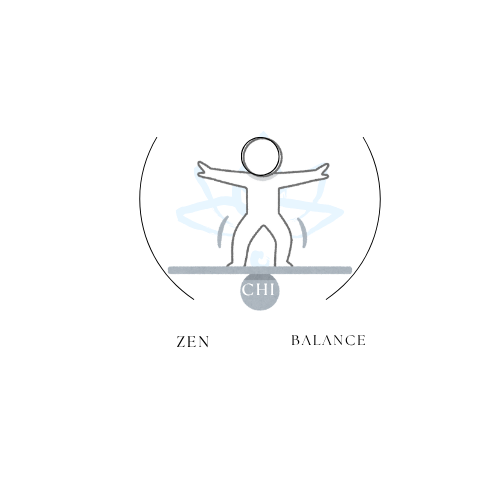
How to Take a Break That Actually Recharges Your Mind
Aktie
Updated on: 2025-10-24
Table of Contents
- A gentle introduction to why it helps to take a break
- Common mistakes to avoid when you take a break
- Pros and cons of choosing to take a break
- Quick tips to take a break without losing momentum
- Wrap-up and key insights on when to take a break
- Questions and answers about when to take a break
If your to-do list keeps growing, it might feel counterintuitive to take a break. Yet a short pause can support steady progress and a calmer mind. When you take a break—whether a one-minute stretch, a five-minute walk, or a brief chance to take a breather—you give your attention a reset. This article offers clear, gentle guidance on how to have a break that truly helps. You will find simple timing ideas, common mistakes to avoid, and quick tips you can follow at work, during study sessions, or at home. The goal is kind and practical: protect your energy, support work-life balance, and return with a little more focus.
Common mistakes to avoid when you take a break
Mistake: taking a break without a purpose
Pausing “just because” can drift into tasks that do not feel restorative. A gentle way to steer your pause is to decide on a simple aim: move, breathe, or reset. If you choose movement, stand up and stretch your legs. If you choose to take a breather, inhale slowly and exhale a bit longer. If you choose to reset, tidy your desk or drink water. Setting a tiny purpose helps the break feel refreshing rather than random.
Mistake: turning a break into endless scrolling
It is easy for a quick check of messages to become ten minutes. Passive scrolling rarely rests the mind and may leave you more tired. If screens help you relax, consider a boundary, such as one message thread or one short video, then pause. A timer can support this. When you take a break, aim for activities that gently lift your attention rather than flood it.
Mistake: the all-or-nothing break cycle
Some people delay rest for hours and then have a long pause that is hard to end. Others stop too often and lose momentum. A balanced approach can feel kinder: choose a short, regular rhythm and keep a longer pause as a reward after a few cycles. This way, you have a break often enough to stay fresh, but not so often that tasks lose flow.
These small shifts make it easier to have a break that restores you. They also help you keep a steady routine, which supports work-life balance in a natural way.
Pros and cons of choosing to take a break
Pros of short, frequent pauses
- Attention refresh: Brief pauses can help you return with clearer focus.
- Energy pacing: A pause gives you a chance to breathe, hydrate, and stretch.
- Task clarity: Stepping away can reveal a simpler next step when you come back.
- Gentle stress relief: Choosing to take a breather may offer a sense of calm.
- Consistency: Planned breaks can help you sustain work over longer sessions.
Considerations and trade-offs
- Flow interruption: If you are in deep focus, stopping too soon might feel disruptive.
- Time creep: A five-minute pause may expand if you do not set a gentle boundary.
- Context switching: Reading new messages can pull you into different tasks.
- Environment: Open-plan spaces can make quiet breaks harder to find.
- Expectations: Team norms may shape when it feels comfortable to have a break.
There is no single “right” way to take a break. It may help to choose a simple plan, try it for a few days, and adjust based on how you feel and how your tasks progress. Your goal is not to be perfect. It is to be kind to your attention.
Quick tips to take a break without losing momentum
A simple 5-5-5 micro-break
When your mind feels busy, a short and steady routine can help. Try a 5-5-5 micro-break:
- Five breaths: Slow inhale, slightly longer exhale.
- Five stretches: Neck roll, shoulder roll, wrist circles, stand tall, gentle twist.
- Five sips of water: Take your time and notice the pause.
This micro-break takes about one to two minutes. It is easy to use between emails, after a meeting, or while studying. If you prefer, call it your “reset minute.” The aim is simple: take a break that clears a little space.
Best time to take a break at work
Many people find that a brief pause after completing a small milestone works well. For example, send a proposal, then stand and stretch. Finish a call, then step outside for a few breaths. If your day is meeting-heavy, a one-minute reset before the next session can help you arrive with more ease. The best time to take a break at work is the moment right after a natural stopping point.
How often to take a break while studying
Steady study often benefits from short, regular pauses. Many learners like a pattern of focused time followed by a brief rest. During your break, try to look away from screens and move your body. If you are wondering how often to take a break while studying, consider a simple cycle that you can maintain across your session and adjust as needed. This can support attention without feeling rushed.
Gentle reset rituals you can trust
When you have a break, a short ritual helps your mind switch gears. You might walk to a window, water a plant, or write one sentence about what you will do next. These small routines signal “pause now, return soon.” If you need a quick mental shift, you can also take a breather by counting three slow breaths and softening your shoulders. Keep it simple so it feels easy to repeat.
If a longer pause feels helpful, consider a short stroll, a light snack, or quiet time away from screens. Some people refer to this as a “mental health break.” You can think of it as a kind, everyday pause to ease your mind and support work-life balance. Keep it gentle, and return when you feel a bit more steady.
Wrap-up and key insights on when to take a break
Choosing to take a break is a practical way to protect your energy, not a sign of slowing down. Short, regular pauses can be enough to reset your attention, while longer rests can offer deeper calm when you need it. Aim for simple routines, set light boundaries, and adjust based on how you feel. Remember that there is flexibility: you can have a break after natural milestones, during study cycles, or whenever you notice your focus fading.
If you would like a gentle nudge to rest, keep a note on your desk that says “Take a breather.” A kind reminder can go a long way. This guide is for general information only and does not replace professional advice. Please choose what feels appropriate for your context.
Questions and answers about when to take a break
How long should I take a break to avoid burnout?
There is no single length that works for everyone. A practical approach is to start small and be consistent. Short pauses of one to five minutes can help you reset. When you feel depleted, a longer pause—such as a walk or quiet time away from your screen—may feel more helpful. Let your energy and task demands guide you. The key is to pause before you feel overwhelmed, not after.
How often should you take a break while studying?
Many learners do well with a repeating cycle of focused time and short rest. Try a pattern that feels manageable for your attention. Step away from your screen during the pause, move your body, and drink water. If your mind still feels full, add a few deep breaths or a brief stretch. Adjust the timing based on the subject and your energy level.
What is the best time to take a break at work?
Natural stopping points often work best. Send the report, then stand and stretch. Finish the meeting, then step outside for fresh air. A one- to two-minute reset between tasks can help you switch context with less friction. If your day has long blocks of deep work, plan a short break beforehand so you can return without losing momentum.
Is a “mental health break” appropriate for everyday life?
Many people find it helpful to have a break that feels kind to the mind. You can define this in simple, everyday terms: a few calm breaths, a brief walk, or quiet time without notifications. The aim is to ease tension and return with clarity. Keep it supportive, short when needed, and respectful of your responsibilities and rhythms.

I'm a passionate curator at Zen Chi Balance, dedicated to spreading calm, harmony, and mindful living through faith-inspired lifestyle products. I help craft meaningful experiences for our global community of mindful shoppers.
The content provided is for informational and inspirational purposes only. It is intended to encourage personal growth, mindfulness, and balance in daily life. Zen Chi Balance does not provide medical, legal, or professional advice. For specific concerns or guidance, please consult a qualified professional. Visit us at www.zenchibalance.com for more inspiration and resources.
